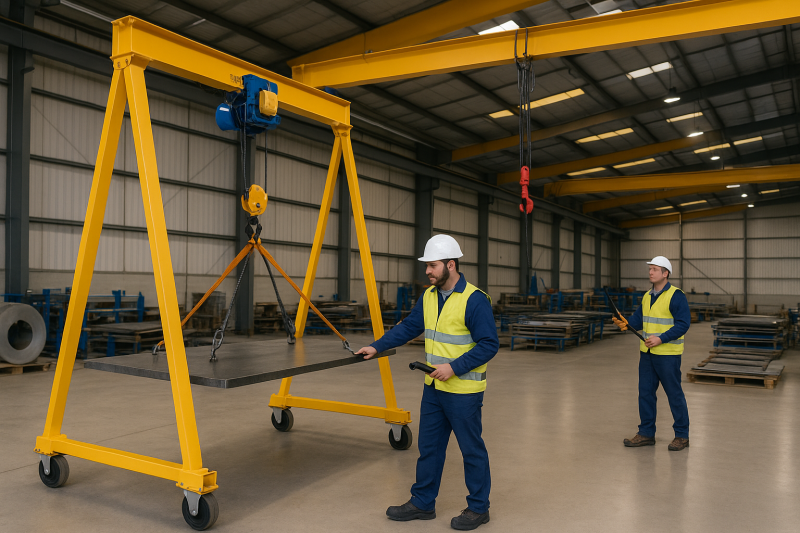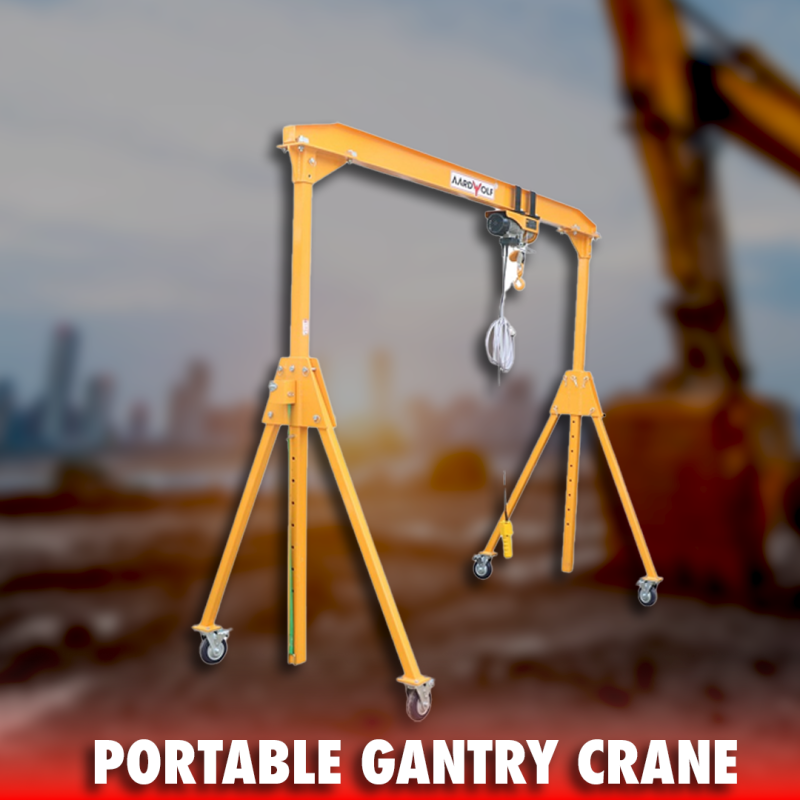



In today’s rapidly evolving industrial landscape, efficiency, safety, and adaptability are critical. From the freestanding jib crane to articulating jib crane models, smart technology is transforming how these systems operate, boosting precision and reducing labor intensity.
If you're new to the topic, explore what is a jib crane for a full overview.
Let’s dive into why automation and smart Jib Cranes are reshaping material handling and what this means for manufacturers, warehouses, and engineering teams alike.

Traditionally, Jib Cranes were seen as simple, stationary lifting arms limited to radial movement. However, advances in load sensors, IoT-enabled controllers, and motion programming have taken them from basic tools to intelligent workhorses.
Modern models now include:
Motorized slewing and trolley motion
Load detection sensors
Collision avoidance systems
Programmable lift/placement sequences
Learn more about the variations in what is jib crane type.
Smart Jib Cranes come equipped with real-time load sensors that:
Prevent overloads
Trigger alarms during off-balance lifts
Log lifting data for audits
This makes them ideal for high-precision work such as assembly lines or automated warehouses.
Instead of relying on manual operation, operators can:
Predefine lift heights and drop points
Set safe zones
Automate repeated lifting paths
This boosts productivity while lowering the risk of human error.
Many smart pillar jib crane and wall mounted jib crane models include:
Mobile app controls
Predictive maintenance alerts
Integration with warehouse management systems (WMS)


Automated jib systems reduce cycle time for repetitive lifting tasks, making them ideal for high-throughput operations.
Built-in safety sensors stop operations if:
A person enters the crane’s swing zone
The arm encounters resistance
Load balance is compromised
This is a significant upgrade compared to manual systems. For operational procedures, explore how to operate a jib crane.
Smart controls optimize motor performance, reducing energy use by avoiding unnecessary motion or idling.
Automated ceiling mounted jib cranes help in:
Moving parts between workstations
Handling fragile components with variable speed control
Integrating with robotic arms
Wall mounted jib cranes in smart warehouses:
Reduce aisle congestion
Handle medium-duty repetitive picks
Assist in last-meter load placements
Portable freestanding jib cranes with auto-adjust features are:
Ideal for site-based repetitive tasks
Safer for operators working around live machinery
To start building your automated solution, explore How to build a jib crane.
How do Jib Cranes compare with traditional hoists and gantry cranes when automated?
| Feature | Smart Jib Cranes | Gantry Cranes & Hoists |
|---|---|---|
| Precision | High – programmable, guided | Manual or limited automation |
| Installation Flexibility | High – floor, wall, or ceiling mounted | Requires runway or large floor area |
| Mobility | Fixed arc or articulating | Limited or heavy movement required |
| Automation Compatibility | Native – sensor + control systems | Retrofitting may be costly |
Still undecided? Compare them in Not Sure If a Jib Crane Is Right? Compare It to Hoists and Gantry Cranes.

Start by mapping out:
Average and peak lifting weights
Swing angles needed
Frequency of use
Freestanding jib cranes for open floor areas
Wall mounted for tight layouts
Ceiling mounted for clear floor space
Need help selecting a model? See how to apply a jib crane.
Ensure your crane works with:
Existing ERP or WMS systems
IoT platforms for data collection
Safety interlocks and access control
Smart jib systems cost more upfront, but long-term savings in labor and error reduction often justify the cost.
Operators need training for:
Using programmable controls
Understanding safety sensor feedback
Remote operation protocols
More electronics = more points of failure. Use systems that offer predictive maintenance alerts and diagnostics.
Expect to see:
AI-based lifting paths that adjust in real time
Full integration with cobots (collaborative robots)
Energy harvesting features for sustainability
Voice-activated crane commands
These trends make it clear why smart Jib Cranes are not just an upgrade—but the future.
Smart automation is reshaping every corner of industrial logistics—and Jib Cranes are no exception. Their ability to localize lifting, integrate with digital systems, and enhance safety makes them an indispensable tool in modern workflows.

If you're ready to modernize, begin with the basics: what is a jib crane, then explore your ideal type in what is jib crane type.
Need help deciding between cranes? Visit Jib cranes and overhead cranes solutions for a full comparison.
References
1. How to operate a Jib Cranes safely
3. Over brace jib crane wall mounted
5. Is a Jib Crane a Gantry Crane
6. Articulated Jib Crane Wall Mounted
8. Manual Counterbalance Crane
10. Over Braced Jib Crane Column Mounted
11. Powered counterbalance Crane
Sign up to receive the latest info on new Aardwolf products, special offers and more.
By signing up you agree to receive emails from Aardwolf with news, special offers, promotions and other information. You can unsubscribe at any time.